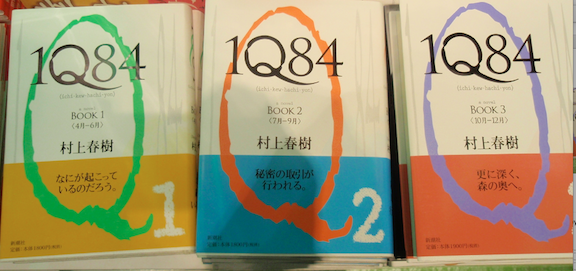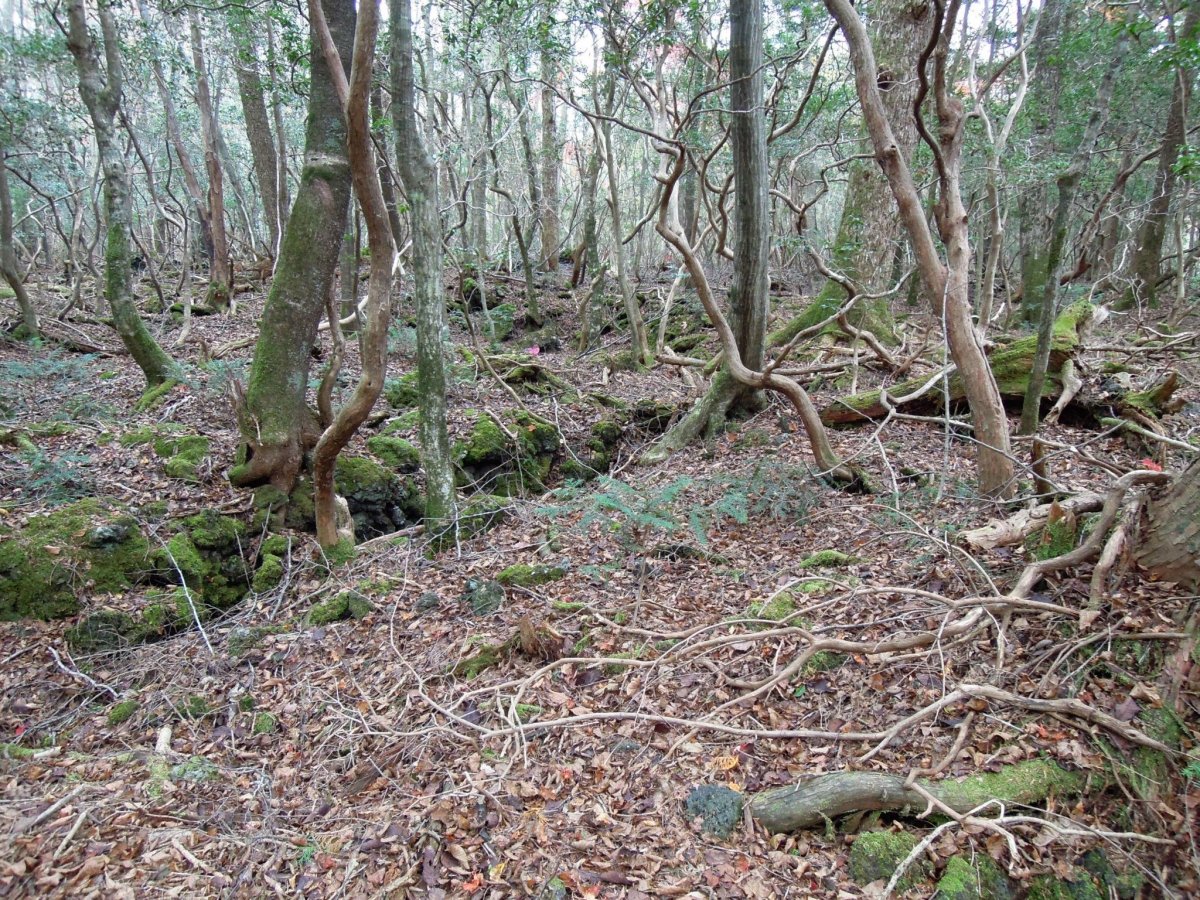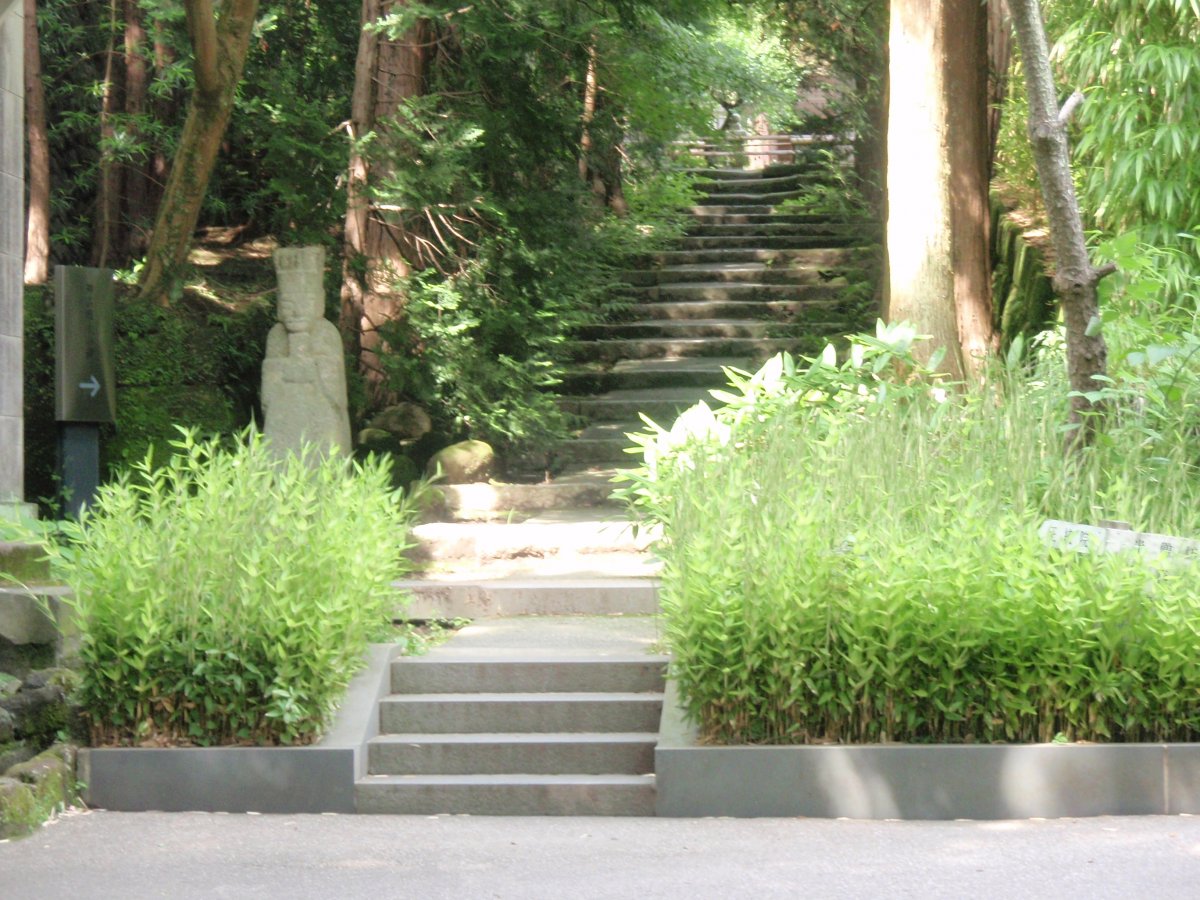Siren Song
In my last JOK Notebook entry I presented 樹雨 (きさめ: precipitation resulting from thick fog condensing on leaves). That word begins with 樹 (888: tree, timber tree, stand of trees), a kanji I've recently encountered an eerie number of times.
For instance, I've been working with photos of Haruki Murakami's book covers, so I keep seeing 樹 inside 春樹 (はるき).

Photo Credit: Eve Kushner
Ah, his given name breaks down as spring + wood! I'm a huge Murakami fan, but I never realized that before. Nor did I notice till now that the first and last characters in his full name contain 寸 on the right side.
Last week I reread the PDF of essay 1835 (又: again), checking that everything was in order. In one sample sentence I found the male given name Kazuki (和樹: harmonious + wood), which also features 樹.
Not long ago, I learned the lovely and poetic word 樹海 (じゅかい: forest), which means "sea of trees"! As it turns out, Aokigahara Forest is called 青木ヶ原樹海 (あおきがはらじゅかい) in Japanese, where 樹海 (rather than, say, 森, もり) means "forest." Although I had learned quite a bit about this forest from Todd Shimoda's terrific novel Oh! A Mystery of Mono no Aware, I'd never heard the term 樹海. (A quick tangent: When a Japanese friend emailed me just now to say that Aokigahara is at the foot of Mount Fuji, I found out that "foot of a mountain" is 麓 (2108: ふもと). This character, a new addition to the Joyo set, positions a grove (林) on the back of a deer (鹿). Ouch!)

Photo Credit: Yoshikazu Kunugi
Aokigahara Forest, a popular suicide spot, is supposed to be dark and dense. That doesn't seem to be the case here, but it has a spookiness that reminds me of the Enchanted Forest in The Wizard of Oz.
Back to 樹, I recently wrote essay 1640 (豆: bean). In doing so, I examined characters containing the "bean" radical, 豆, such as 樹! Strange that a kanji meaning "tree" would contain a bean. Actually, although 豆 now has that meaning, Kenneth Henshall says that, with a slightly different shape, this character originally represented an ancient east Asian table that doubled as a container. Known in Japanese as 高坏 (たかつき), in which 坏 is non-Joyo, this combined table and container looked like a birdbath or a hollowed-out barstool. Anyway, Henshall says that the 豆 inside 樹 means "food vessel" but also phonetically expresses "stand, erect," giving a sense of "upright." The 寸 on the right represents a "hand" that holds the food vessel upright, according to Kanjigen, and the 木 on the left is of course a "tree," With 樹, then, we have a tree that stands upright.
What does it mean that I encounter 樹 at every turn?! I believe I'm being called on to consider it at some deep level. It's funny how some kanji beckon to you like that, popping up over and over with their own siren song. I'm being lured deeper and deeper into the woods ...

Photo Credit: Eve Kushner

Comments